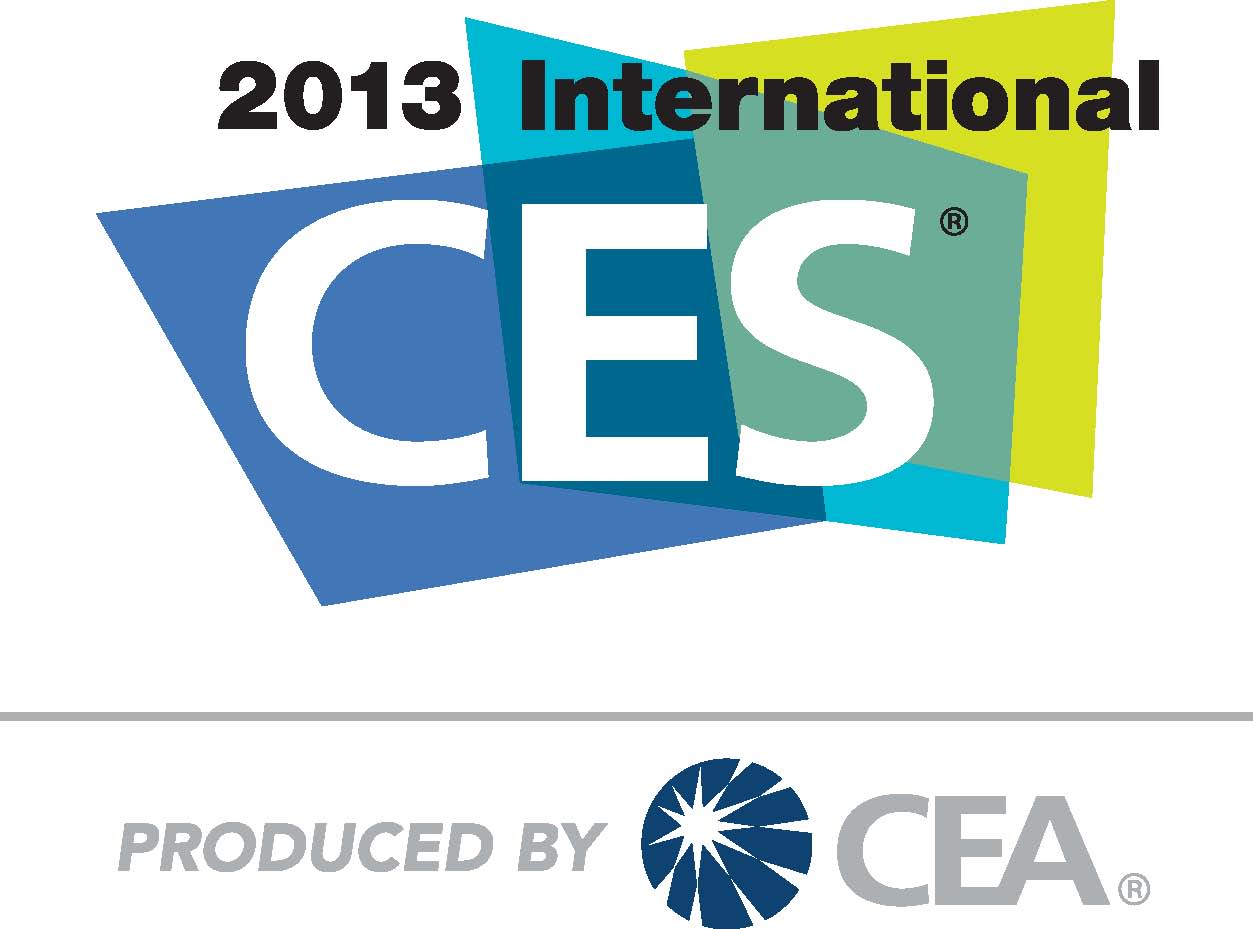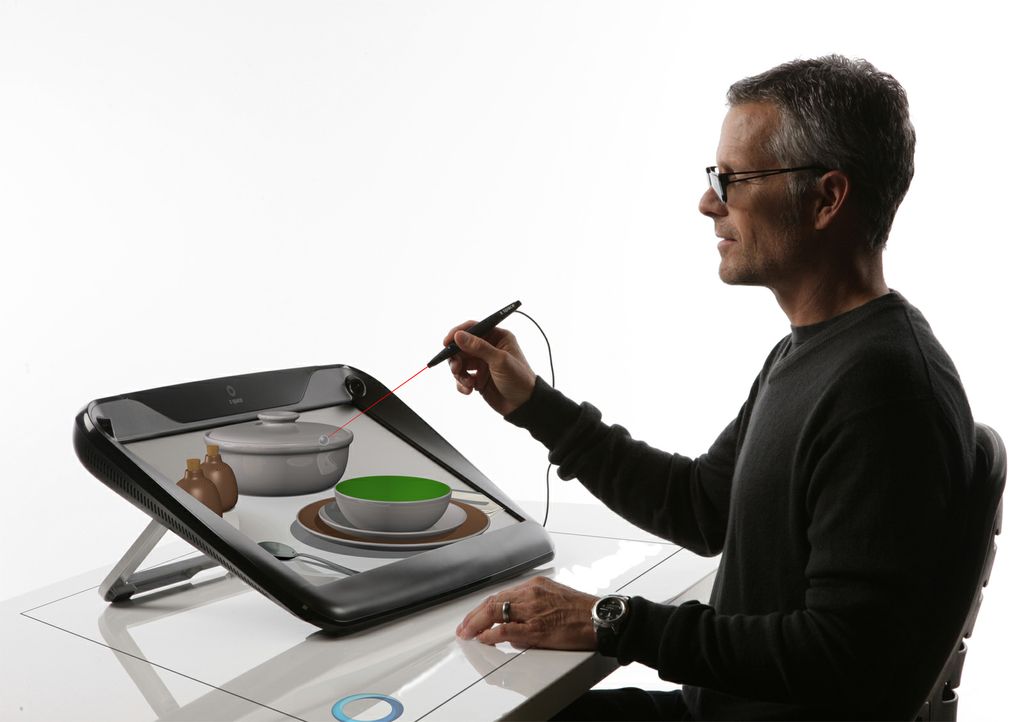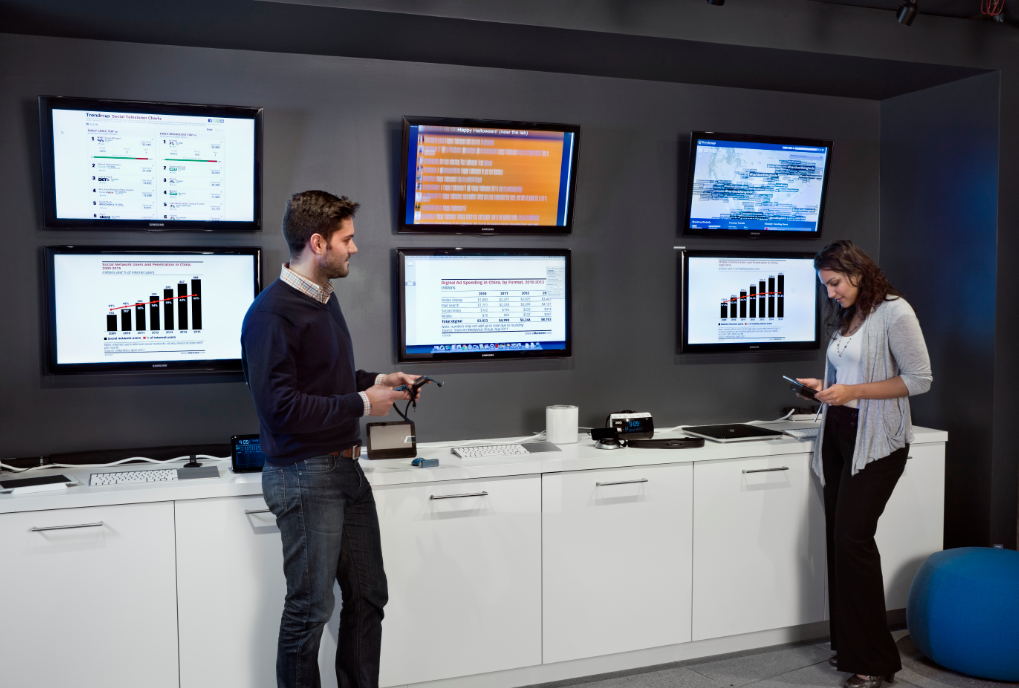Content not available.
Please enable ADDITIONAL COOKIES from settings
Please enable ADDITIONAL COOKIES from settings

There were lots of announcements from Netgear earlier today at CES. Most of these focused around the Smart Home, an area which should triple over the next couple of years. Netgear unveiled new home security cameras which are wireless and fit in the palm of your hand. The Vue Zone and the Vue Phone Night Vision Camera transmits video wirelessly and will email you if there is unexpected motion in the house so you can see immediately what the camera is seeing. They also released a new version of Plus2TV which allows easy streaming from your mobile devices to your television. There are new dual band 11ac WiFi products allowing faster connectivity in a world of growing devices.
The Genie App allows the users to generate QR codes as a way to share home networking, printing and the like without sharing your password.
The NeoTV Max has a built in Sling Player so that accessing content from your Slingbox from other TV’s is a breeze, helping to, as they describe it, “turn your regular TV into a smart TV.” Their new NeoTV Prime is a partnership with Google TV. David Henry, Netgear’s VP Product Marketing, described it as “Google TV done right.” It combines Google TV and the ability to run apps from Google Play with enhanced support for home media and connected USBs. You can cross platform search with a dual sided remote/qwerty keyboards and it predict and make recommendations for future viewing.

After 3 flights and 24 hours of non-stop traveling, I’ve finally made it to the Philippines, to a beautiful deserted island in Palawan, which couldn’t be further removed from the hectic pace of New York life: what bliss…
But being a Millennial (just…) I naturally felt compelled to get plugged in immediately.
Having logged onto the Wi-Fi network to post my envy-inducing photos on Instagram, I found the site to be blocked. This seemed unusual given that the Philippines is known for its obsession with social networking.
So I did a quick search to see what was going on, and saw that Justin Bieber had the Philippine government up in arms and ready to banish him from the country forever for mocking national hero, Manny Pacquiao, on Instagram. I can’t verify that this had any connection with my inability to get onto Instagram, but the story caused me to ponder the nature of Filipinos (who are my countrymen on my mother’s side).
After doing a bit of research, and thinking back to my many Christmases spent with the Filipino relatives, I found that the Filipinos bag quite a number of “firsts.”
Here are 5:
I suppose it is this unique combination of extremely passionate traits that has led the Philippine government down the extraordinary path of threatening Justin Bieber with persona non grata – especially given how very popular Bieber is in the Philippines. In fact, according to Google search data from 2010, Bieber may in fact owe much of his rise to fame to the Philippines where he was more popular than in any other country (there’s a bonus “first.”)
Bieber, if I were you, I’d start groveling.

For the last few months, I’ve been hit with a daily dose of heart-warming nostalgia, thanks to our friends at Timehop, informing me of my social media life a year ago.
Given the considerable effect this has been having on me, I decided to try and work out what was at play, taking the above Timehop post as an example.
Here are 5 things I deduced from the experience:
1. Accelerated Nostalgia
I’d been instantly reminded of the fact that just one year ago, I was deep into my life in LA, with no thought to how my life is now, living in NY. Goodness, how can time have slipped by so quickly? This was a typical case of “accelerated nostalgia” – the feeling that things happen so fast in our hyper-connected world that what happened a year ago feels like history. SO TRUE!
2. Systematic Nostalgia
Nostalgia is often triggered unexpectedly, by a random experience or event. Curiously, my nostalgic experience had been triggered by an automated email, which meant there was nothing at all serendipitous about the delivery. But that didn’t matter, as the emotion it elicited was just as authentic. My nostalgia had been induced algorithmically. Interesting.
4. Social Nostalgia
A bout of nostalgia can leave you feeling wanting and lonelier than ever, especially as the people you are with at that moment in time typically don’t get it. But in this case I was able to satisfy my momentary feeling of loss simply by clicking “share this” which meant I could relive the moment right then with my dear friends @PhyliaHair, @hardboildwonder and @nhitchps (who on earth…?), who’d know exactly how I was talking about.
I even got some re-tweets and a couple of favorites out of it – that’s a social media WIN.
5. Never-ending Nostalgia
Each day we do stuff on social networks: post messages, check-in or post pictures or videos as we hyper-document our lives, we are producing more and more multimedia memorabilia to be resurfaced in exactly a year’s time. Goodness, I am now getting nostalgic about the nostalgia I will feel about today, this time next year. Not sure what you call that… but I am now plotting some more arty filters on my photos to ensure that the future moment in question is as rose-tinted as possible.
Needless to say, this is powerful stuff that will likely never run dry, as we will never get enough of the material of our own lives, and will welcome new lenses through which to peer in at it.
What are your thoughts on social media nostalgia?
2013, The Year of Anticipation and Refinement
As in years past, we have put together this report to share with you our areas of interest and focus for the coming year. We are 20 marketers from nontraditional backgrounds. This past year, we logged thousands of hours working with clients to understand their marketing challenges, while spending equal time working with today’s innovation economy of products, platforms and companies to get in front of future marketplace solutions. This report represents our top-line thinking and observations and provides a snapshot of what we look forward to further exploring in 2013.

On rare occasion you see a technology and sense that it can change the way media is consumed.zSpace is an interactive immersive 3D experience which includes hardware, monitor, glasses, and a stylus. The technology was initially developed for the military as a way of planning battle strategy but has since been used by movie production houses, architects, doctors, and more recently some adventurous retailers.
Unfortunately it’s one of those things you have to experience first hand to get but it’s hand down the most convincingly real 3D experience I’ve seen. When you look at 3D modeled objects in this system, you feel you’re looking at the real thing. Using a stylus you can pull the objects closer or push them farther, you can twist them and turn them and see them from all angles. The only thing you can’t do is touch them.
Perhaps the most compelling aspect of the experience is that you can sense texture in a way that isn’t possible in 2D experiences or even other 3D experiences. This has very real implications for the potential of home shopping, because when you see a pair of shoes on zSpace you feel like you know exactly what it looks like AND what it feels like. In theory It would allow you to purchase with much greater confidence than you can in today’s home shopping world.
It also has the potential to transform teleconferencing in the future if the technology evolves to the point where it can render objects in real time. You would be able to talk to people and feel like they’re really there with you.
The system currently retails for around $6,000 and is used primarily for professional purposes. A few adventurous brands have fallen in love with the technology and created ways to feature it in retail environments. For example one jewelry company allows you to design your own rings using zSpace, which lets you experience exactly what the ring would look like in real life.
For now check out this video to get a better sense of the system, but next time you come to the Lab make sure to try it out. It’s incredibly fun, slightly addictive, and it’s going to change the way we think about 3D.

My close friend Devon from out of town visited New York in early December. At dinner, when suggesting we begin with the crispy cheddar curds with spicy pimento sauce (mmm…), she dropped the bomb: “I gave up fried foods as my 2012 New Year’s resolution.”
As a midwestern girl who enjoys her deep fried fare, I was initially shocked, but we quickly moved on to find healthier alternatives. The next day, though, I found myself thinking about Devon’s successful resolution. What really surprised me isn’t that she gave up something so ubiquitous and delicious (though that’s a feat in and of itself), but that she maintained her New Year’s resolution all year long. I haven’t ever kept a resolution for longer than a few weeks — let alone 11 months — but she inspired me.
Habit design has been a hot topic this year, and for good reason; a host of new technologies have been introduced to help us make new habits and stick to them.
First, there are a wide range of mobile apps to help you incorporate new habits into your life. Lift is a habit tracking and self improvement app, in which the user identifies good habits and checks in each day. The app is social, so your friends on the platform can award you “props” for sticking to your goals. DailyFeats is another habit tracking app, that breaks down your goals into simple daily actions called feats. Each time you accomplish a feat, you earn points that can be redeemed for tangible DailyFeats rewards, like gift cards or magazine subscriptions.
Second, a growing range of wearable devices bring habit creation into the realm of the quantified self. Platforms like Fitbit, NikeFuel and the Jawbone Up enable you to seamlessly track your adherence to wellness goals, while the Lark and Zeo help you improve your sleep quality and stick to a consistent schedule.
Last, habit design technology is being built into a variety of everyday products. The Beam Toothbrush connects via Bluetooth to a mobile app to ensure you’re spending enough time brushing your teeth. The Floss Trainer is a toothbrush holder that detects when you’ve finished brushing, and prompts you to floss both visually and audibly.
So will I keep my 2013 resolutions? I feel like I have a better shot than ever before. It’s nice to know that when sheer willpower isn’t enough, I can turn to these applications and devices to help me take the first step toward lasting, positive change.

Designing and developing web apps that are consistently beautiful across devices can be difficult. People access the web through a myriad of devices with varying aspect ratios, resolutions, and pixel densities. Users expect the same experience across their devices. And rightfully so! There is nothing wrong with this expectation. It is what I expect of the sites and services I use. However, achieving this seamless experience is a complicated process.
Content and elements need to rearrange and resize. Which brings up questions: Should you use media queries? Browser sniffing (gross)? Some other solution? How do we best use the available space to deliver our product? This is a question that I’m not going to attempt to answer. I want to talk about user interfaces and the stuff they are made of. More specifically, what is the best way to handle interfaces across a wide range of ever changing screens?
Infinite scalability is the answer. Draw your UI with code and you’ll never have to worry about resizing or blurry interface elements again. I don’t mean SVG because SVG sucks. Yeah, you can do amazing things with SVG, but it ignores one of the key architecture principles of the web. Design your interface with HTML and CSS3. Style the hell out of those semantic tags. CSS3 is slowly adopting nearly all the necessary tools to design beautiful UIs. It already supports things like gradients, shadows, and rounded corners, however, designers know these are not enough.
The way things are now, CSS3 is hardly as powerful of a design tool as Adobe Photoshop or Illustrator, making images still necessary in many situations. In fact, I admit that I think images will be necessary for a long time to come in order to achieve the maximum level of artistic detail, but we are rapidly approaching a point where CSS alone is good enough to produce beautiful interfaces without sacrificing user experience. And in the end, that’s all that matters, right?
That being said, I am excited for the future. The Adobe Web Team and Canon have already drafted and submitted a proposal to introduce blend modes into browser rendering models. Photoshop plugins that convert layer styles to CSS already exist. This is not just a trend but the start of a new era of web/interface design, where the browser is your canvas and CSS your brush.
Some copy about stock imagery